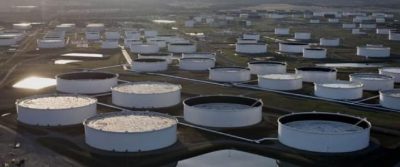The Boom in US Shale Oil? The US is the Largest Oil Producer in the World
The EIA Is Grossly Overestimating U.S. Shale

The prevailing wisdom that sees explosive and long-term potential for U.S. shale may rest on some faulty and overly-optimistic assumptions, according to a new report.
Forecasts from the U.S. Energy Information Administration (EIA), along with those from its Paris-based counterpart, the International Energy Agency (IEA), are often cited as the gold standard for energy outlooks. Businesses and governments often refer to these forecasts for long-term investments and policy planning.
In that context, it is important to know if the figures are accurate, to the extent that anyone can accurately forecast precise figures decades into the future. A new report from the Post Carbon Institute asserts that the EIA’s reference case for production forecasts through 2050 “are extremely optimistic for the most part, and therefore highly unlikely to be realized.”
The U.S. has more than doubled oil production over the past decade, and at roughly 12.5 million barrels per day (mb/d), the U.S is the largest producer in the world. That is largely the result of a massive scaling-up of output in places like the Bakken, the Permian and the Eagle Ford. Conventional wisdom suggests the output will steadily rise for years to come.
It is worth reiterating that after an initial burst of production, shale wells decline rapidly, often 75 to 90 percent within just a few years. Growing output requires constant drilling. Also, the quality of shale reserves vary widely, with the “sweet spots” typically comprising only 20 percent or less of an overall shale play, J. David Hughes writes in the Post Carbon Institute report.
After oil prices collapsed in 2014, shale companies rushed to take advantage of the sweet spots. That allowed the industry to focus on the most profitable wells first, cut costs and scale up production. But it also pushed off a problem for another day. “Sweet spots will inevitably become saturated with wells, and drilling outside of sweet spots will require higher rates of drilling and capital investment to maintain production, along with higher commodity prices to justify them,” Hughes says in his PCI report.
In addition, this form of “high-grading” does allow for rapid extraction, but it doesn’t necessarily mean that more oil is ultimately going to be recovered when all is said and done.
The same might be true for all of the highly-touted productivity gains, Hughes says. The industry has boosted productivity by drilling longer laterals, intensifying the use of water and frac sand, as well as increasing the number of fracking stages. These productivity improvements are “undeniable,” Hughes writes.
However, the “limits of technology and exploiting sweet spots are becoming evident, however, as in some plays new wells are exhibiting lower productivities,” Hughes says. “More aggressive technology, coupled with longer horizontal laterals, allows each well to drain more reservoir area, but reduces the number of drilling locations and therefore does not necessarily increase the total recovery from a play—it just allows the resource to be recovered more quickly.”
Already, some shale plays have seen production plateau while others are in decline.
In short, Hughes says that of the 13 major shale plays analyzed in the PCI report, the EIA has “extremely optimistic” outlooks for nine of them. Of the remaining four, three of them are “highly optimistic,” and only one – the Woodford Play in Oklahoma – is ranked as “moderately optimistic.”
He notes that in some instances, the EIA’s forecasts are so optimistic that the production volumes exceed the agency’s own estimates for proven reserves plus unproven reserves. The EIA also assumes that every last drop of proven reserves is produced, along with a high percentage of unproven reserves by 2050.
“Although the ‘shale revolution’ has provided a reprieve from what just 15 years ago was thought to be a terminal decline in oil and gas production in the U.S.,” Hughes writes, “this reprieve is temporary, and the U.S. would be well advised to plan for much-reduced shale oil and gas production in the long term.”
Regardless of the geology, climate policy and waning investor interest will likely result in a lot of oil being left in the ground. Hughes says that the EIA’s figures are optimistic, even without considering any mandates to cut greenhouse gas emissions. “If U.S. energy policy actually reflected the need to mitigate climate change…the EIA’s forecasts for tight oil and shale gas production through 2050 make even less sense.”
*
Note to readers: please click the share buttons above or below. Forward this article to your email lists. Crosspost on your blog site, internet forums. etc.

